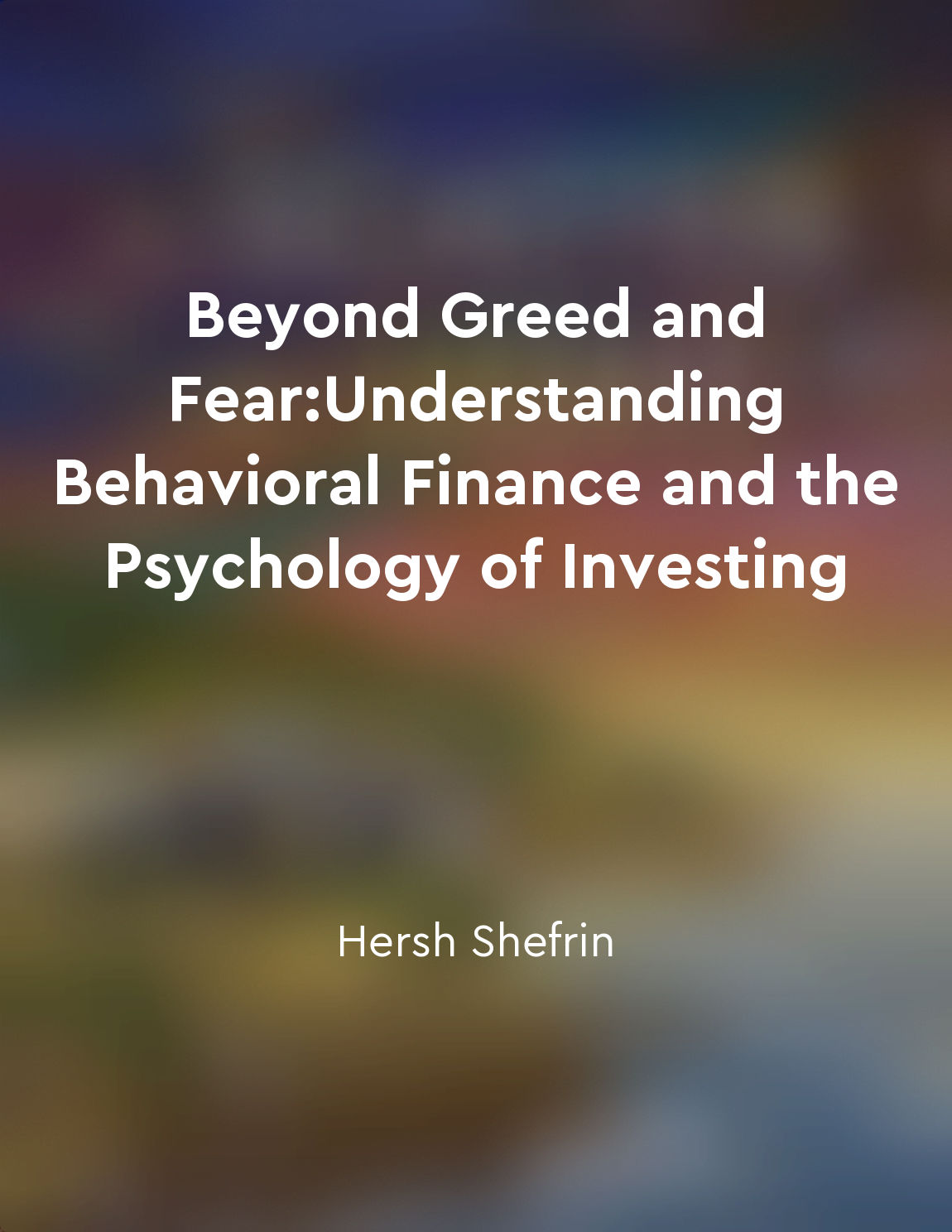Anchoring influences how investors perceive value from "summary" of Beyond Greed and Fear:Understanding Behavioral Finance and the Psychology of Investing by Hersh Shefrin
Anchoring is a powerful psychological concept that influences how investors perceive value. When investors make decisions, they often rely on a reference point or "anchor" to evaluate an investment opportunity. This anchor can be based on a variety of factors, such as the price at which they purchased a stock, the current market price, or even a financial benchmark. Once an anchor is established, investors tend to make decisions relative to that anchor. For example, if an investor purchased a stock at $50 per share and the price drops to $40 per share, they may feel reluctant to sell because they are anchored to the original purchase price of $50. This anchoring effect can lead investors to hold onto losing investments longer than they should, in the hopes that the price will rebound and they can break even. Anchoring can also influence investors in other ways. For instance, if an investor sees a stock price steadily rise over time, they may become anchored to that upward trend and perceive the stock as a good investment, even if other factors suggest otherwise. This anchoring bias can cloud judgment and lead investors to overlook important information that contradicts their anchored perception of value. In addition, anchoring can influence how investors interpret financial news and information. For example, if a stock is recommended by a popular financial analyst at a certain price target, investors may become anchored to that target and view it as a reasonable valuation, even if the stock is overvalued based on other metrics. This anchoring bias can lead investors to make decisions based on faulty reasoning and inaccurate perceptions of value.- Anchoring is a cognitive bias that can significantly impact how investors evaluate investment opportunities. By understanding the influence of anchoring on decision-making processes, investors can become more aware of their biases and make more informed investment decisions.


